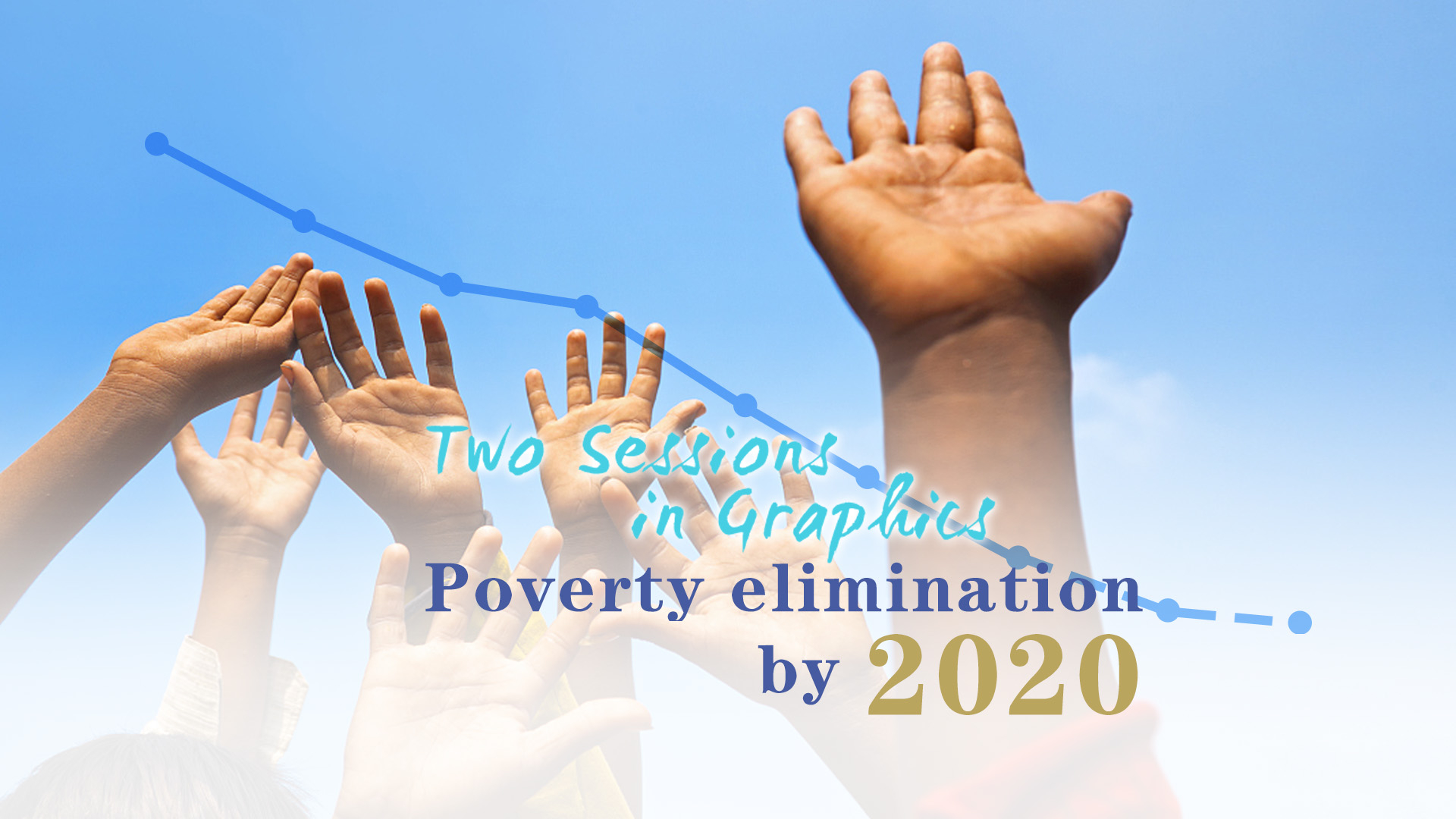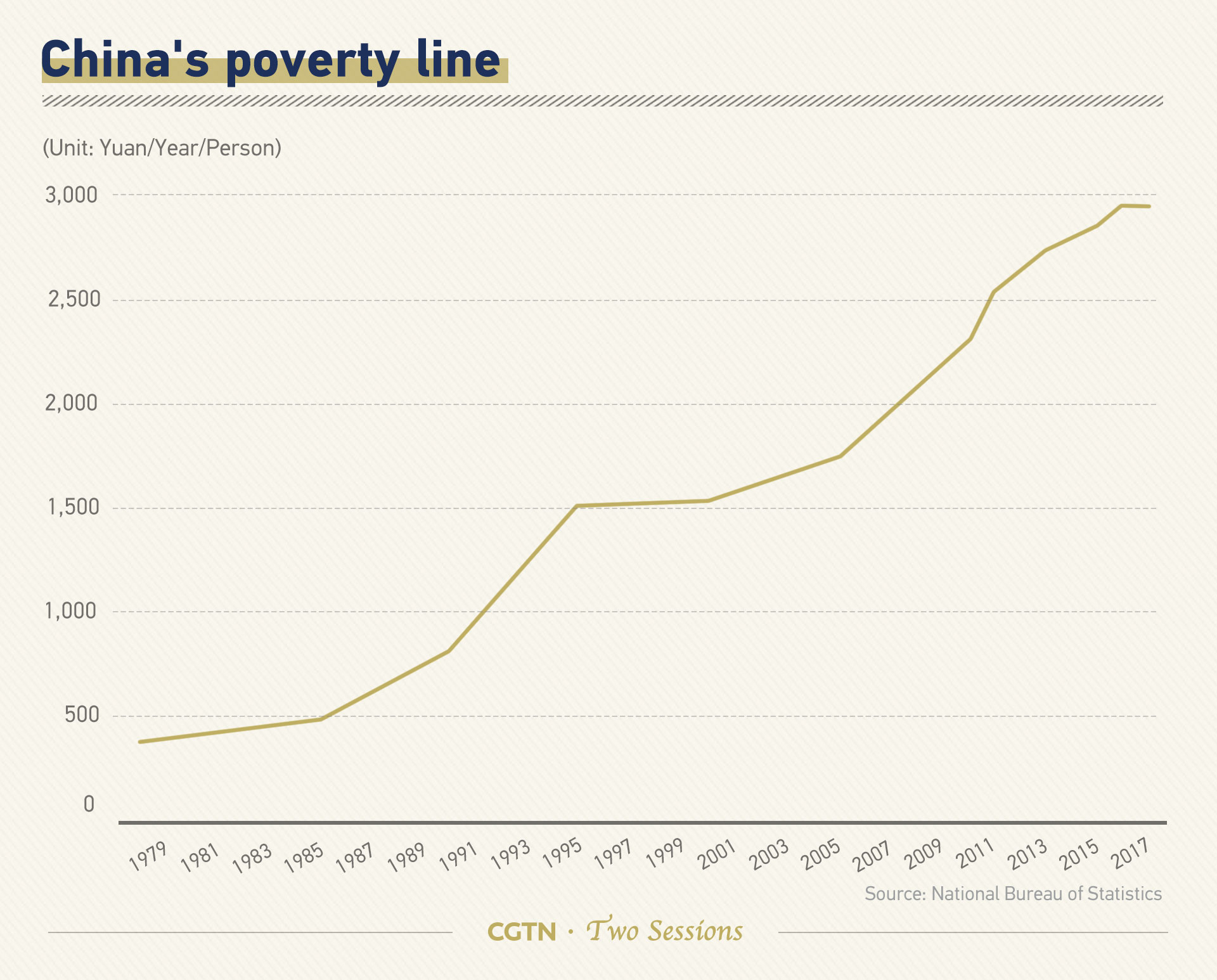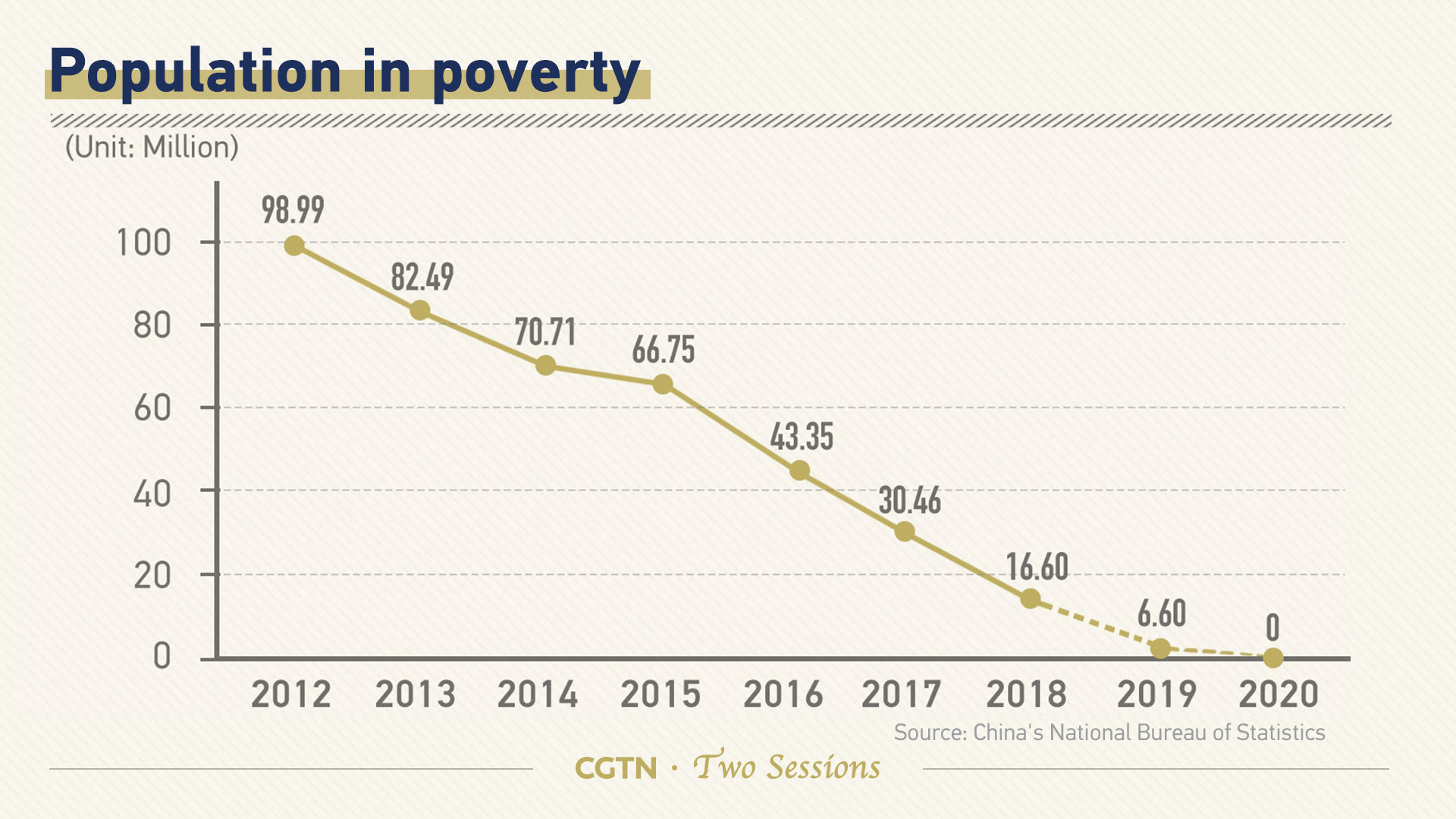
Domestic
16:55, 01-Mar-2019
Latest data reveal how far away China is from the 2020 poverty elimination goal
Updated
19:32, 01-Mar-2019
CGTN

The clock is ticking for China's goal of eliminating poverty by 2020 to build a moderately prosperous society as China's 2019 Two Sessions – the annual meetings of the national legislature and the top political advisory body – approach.
"We must ensure that by the year 2020, all rural residents living below the current poverty line have been lifted out of poverty, and poverty is eliminated from all poor counties and regions," Chinese President Xi Jinping said in a report delivered to the 19th National Congress of the Communist Party of China (CPC).
He said the period until 2020 will be decisive in finishing the building of a moderately prosperous society in all respects.
What does it mean to eliminate poverty completely?
The latest data released on February 15 by the Chinese National Bureau of Statistics show that there are currently 16.6 million people living below the official poverty line, a standard that was officially defined in 2011 as a per capita annual income of 2,300 yuan at 2010 constant prices (340 U.S. dollars at the 2010 market exchange rate).
Taking account of inflation, 2,300 yuan in 2010 would have been equivalent to a nominal income of around 3,000 yuan in 2017. China's definition of the poverty line is higher than the global standard of 1.9 U.S. dollars a day (at 2011 prices) in purchasing parity terms (PPP), adopted by the World Bank in 2015.

According to China's guideline on winning the battle against poverty, the government identified that China's poverty reduction should guarantee access to food and clothing for poor population and nine-year compulsory education for children from low-income families. Basic medical needs and good living conditions for the indigent population should also be guaranteed.
To deliver the goal of eliminating poverty by 2020, China needs to lift around 8.3 million rural residents out of poverty each year staring now until 2020.
To see if it is possible, let's have a look at how China has done in its poverty alleviation campaign over the past years?

An average of 13.7 million people have been brought out of poverty every year since 2012. To win the tough battle against poverty by 2020, the government has set the target to reduce the rural poor population by more than 10 million this year. There are few who doubt that this will be accomplished.
But experts noticed that the closer China gets to the "zero-poverty" target, the harder it becomes to reach it due to the high marginal costs. The remaining poor are spread out in even further remote and marginal areas, with difficult physical access, limited natural or physical assets and limited development opportunities.
In addition, the remaining poor are the most vulnerable segment of society, like the eldest, chronically sick or disabled people, said Matteo Marchisio, the International Fund for Agricultural Development (IFAD) manager for China and Mongolia.
A county can be removed from the country's list of impoverished areas if less than two percent of its population is below the national poverty line. In western regions, if less than three percent of the people live in poverty, the county will be removed from the list.
Poverty in China's rural areas shows obvious regional characteristics. More than half of the rural poor population resides in the western region. To ensure that by 2020 all poverty counties are removed from the poverty list and the issue of regional poverty is resolved, the government has adopted targeted and accurate poverty alleviation measures, among other initiatives.
By the end of 2018, and there were seven provinces or provincial regions with a poverty headcount ratio (the proportion of a population living below the poverty line) higher than three percent.

Removal from the list does not mean poverty relief efforts end. The 2020 goal only indicates the elimination of absolute poverty.
Li Xiaoyun, professor of College of Humanities and Development Studies at China Agricultural University, said the completion of the 2020 poverty alleviation goal is not the end of rural poverty. With the disappearance of absolute poverty in rural China, rural poverty will enter a new stage characterized by transformational secondary poverty and relative poverty. By then, the transformed and potential poor groups will become the new target of the country's poverty alleviation work.
If China achieves its 2020 goal, it would be 10 years ahead of the United Nations Sustainable Development Goals' target of ending global poverty by 2030. China is also the first developing country to meet the UN's Millennium Development Goals (MDGs) target of reducing the population living in poverty by half ahead of the 2015 deadline.
While striving to reduce poverty at home, China has also been actively supporting the cause in other developing countries. China has initiated development projects in connection with the Belt and Road Initiative, which would well benefit other countries. With a concerted effort, the Chinese example can become contagious and lead the world in the direction of a community with a shared future for mankind that President Xi has proposed.

SITEMAP
Copyright © 2018 CGTN. Beijing ICP prepared NO.16065310-3
Copyright © 2018 CGTN. Beijing ICP prepared NO.16065310-3